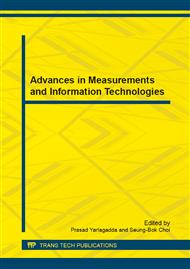p.320
p.332
p.336
p.341
p.345
p.349
p.353
p.357
p.363
A Fault Feature Extraction Method Based on LMD and MSE for Reciprocating Compressor
Abstract:
This paper presents a feature extraction method based on LMD and MSE for reciprocating compressor according to the strong nonstationarity, nonlinearity and features coupling characteristics of vibration signal. The vibration signal was decomposed into a set of PFs, and then multiscale entropy of the first several PFs were calculated as feature vectors with different scale factors. Based on the maximum of average Euclidean distances, the feature vectors which have the best divisibility were selected. The feature vectors of reciprocating compressor at different bearing clearance states were extracted using this method, and superiority of this method is verified by comparing with the results of sample entropy.
Info:
Periodical:
Pages:
345-348
Citation:
Online since:
February 2014
Authors:
Keywords:
Price:
Сopyright:
© 2014 Trans Tech Publications Ltd. All Rights Reserved
Share:
Citation:


